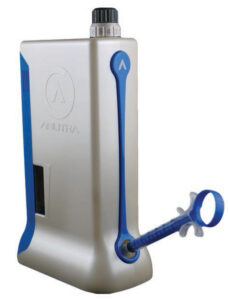KOL Forum: Buffered Injections by Anutra Medical
Key opinion leaders offer valuable perspective on clinical topics that will help raise your level of care.
BUFFERED INJECTIONS ARE MORE PROFOUND AND PREDICTABLE THAN TRADITIONAL ANESTHETIC
Anutra Local Anesthetic Delivery System from Anutra Medical
 It feels like only yesterday when my father, a medical anesthesiologist, asked me, “Why don’t dentists buffer?” He was referring to buffering local anesthetics, a process in which a buffering agent is used to neutralize the acid found in a local anesthetic, such as lidocaine. The medical community has embraced this practice for more than half a century, but, due to limitations in dentistry, it has not been widely adopted by oral health professionals.
It feels like only yesterday when my father, a medical anesthesiologist, asked me, “Why don’t dentists buffer?” He was referring to buffering local anesthetics, a process in which a buffering agent is used to neutralize the acid found in a local anesthetic, such as lidocaine. The medical community has embraced this practice for more than half a century, but, due to limitations in dentistry, it has not been widely adopted by oral health professionals.
I responded that, for dentists, it was a complex, time-intensive and cost-prohibitive process. Knowing that the benefits include predictable anesthesia, fast onset, and a comfortable injection for the patient, I decided then to bring buffering to dentistry.
After years of research, engineering and design, the Anutra Local Anesthetic Delivery System was born. While I could go into the science and engineering of this award-winning product, I want to share how Anutra has impacted my practice.
As a sedation dentist, I specialize in treating difficult patients, many of whom are high-fear patients or have trouble getting numb altogether. Initially, I embraced buffering because it makes injections more comfortable for patients. In addition to serving as a local anesthetic, the buffered solution acts as a profound topical. And because the injection is virtually painless, it is not unusual for one of my fearful, pain-intolerant patients to confess, “Doctor, I didn’t even know you gave me a shot.”
While using Anutra to buffer lidocaine is highly effective for pain management and injection comfort, I soon realized that it also revolutionized my entire workflow. With buffered anesthetics, patients are consistently numb within two minutes, even on a block. By the time I put down the syringe and pick up my handpiece, I am ready to go to work. This means that I never have to leave my patient’s side.
Think about how inefficient it is to go check hygiene after anesthetizing. The only reason we do this is because of the inadequacies of lidocaine. With buffered injections, however, I am often able to move a patient from hygiene to restorative care ahead of schedule. Due to this streamlined workflow, my staff and I typically have no problem squeezing in emergency cases. Our days are less hectic — and my practice is more profitable.
As an oral health professional, I highly encourage you to use buffered lidocaine as your go-to anesthetic. Besides offering improvements in onset times, patient comfort and practice efficiency, buffered injections are far more profound and predictable than traditional anesthetics. It will truly revolutionize your patient satisfaction levels, not to mention your workflow.


